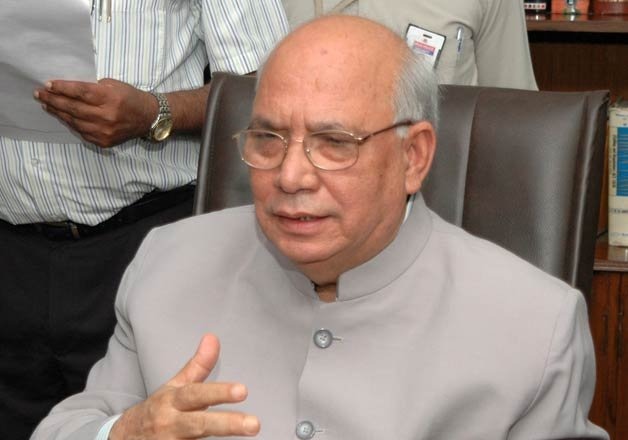Beginning with severe respiratory problems, long term exposure to coal dust can decimate both plant and animal life in a biodiversity hotspot
On the night of November 1, thousands of Goans gathered on the railway lines at Chandor, South Goa to protest against the doubling of railway tracks for enhancement of coal transportation from the Mormugao Port Trust (MPT) to steel plants in neighbouring Karnataka. Currently, the State serves as a crucial link to coal transportation to Karnataka. However, despite the existing infrastructure, the Government is looking to fast-track the process by introducing three major infrastructure projects. Goa’s fate was sealed by the “devil’s dust” (fine particles of coal) in 2016 as the MPT led development programme, Sagarmala, received the Centre’s nod aimed at converting Goa into a coal hub.
During the nationwide lockdown, the Union Ministry of Environment, Forest and Climate Change and the National Board for Wildlife gave “virtual clearance” over a video conference to three interconnected infrastructure projects — four laning of the existing NH-4A (Goa-Karnataka Highway), laying a 400KV transmission line and doubling of an existing railway line from Mormugao to Londa. The three linear projects are situated within the same protected area. Reportedly, all three projects require felling of 70,000 trees and diversion of 216 hectares of forest and private land in Mollem National Park and Bhagwan Mahaveer Wildlife Sanctuary in South Goa. This forest is part of the Western Ghats, which is one of the eight biodiversity hotspots of the world and part of the UNESCO World Heritage Site. The protected area is home to more than 721 plant species, 235 bird species, 219 butterfly species, 70 mammal species, 45 reptile species, 44 fish species and 27 amphibian species. This includes endemic as well as rare and vulnerable species such as the tiger, dhole, mouse deer, gaur and the Indian pangolin among others. In addition, there are 18 bird species that are endemic to the Western Ghats and seven bird species that are of high conservation concern are found here. This area was marked as an Ecologically Sensitive Area by the Madhav Gadgil Committee in 2012.
The Bhagwan Mahaveer Wildlife Sanctuary and Mollem National Park, part of a larger contiguous forest, is a treasure trove of flora and fauna and is an important tiger corridor between Goa and the adjoining Kali Tiger Reserve in Karnataka. Of 240 sq km, the sanctuary and the national park constitute the largest protected area in Goa. The Western Ghats are one of the most important tiger habitats in the world. Expanding the highway and doubling of the South Western Railways will leave the southern part of the Ghats disconnected from the north. This will lead to death and injuries to tigers and other numerous animals as they cross the tracks in their cyclic movements. The Tilari Dam and relentless mining have already decimated elephant habitats and other significant parts of the Ghats. Forests in the Western Ghats that have existed for thousands of years are irreplaceable. The Intergovernmental Panel on Climate Change (IPCC) Report, 2019, shows that the Western Ghats are one of the most resilient ecosystems that will buffer us from climate change.
Roads and power lines are known to fragment habitats, impacting flora and fauna in incalculable ways. The habitat where these projects are proposed is also home to a newly-discovered dragonfly species. Dandeli and Goa are believed to be an elephant movement route. Now tigers and leopards are also likely to move through here. While there are eight or nine underpasses proposed for wildlife, there is little information on where these will be constructed, and even less is known about their scientific efficacy. Ironically enough, these projects have been cleared at a time when Covid19 has revealed how loss of forest land, wildlife and biodiversity can increase zoonotic diseases.
The Government’s move goes to show how India’s wildlife laws are openly flouted with little or no regard to consequences. According to experts, a thorough verification of the Environmental Impact Assessment (EIA) and project proposals is rarely done, showing regulatory bodies’ scant regard towards eco-sensitive zones. It is a sad reflection on the state of environmental governance that the MoEFCC and NBWL overlook crucial statutory requirements and have undermined the purpose of the EIA. The evidence put forth by naturalists, conservationists and the people living in these forests over centuries needs to be taken into consideration.
Coal dust causes a host of problems for wildlife. Beginning with severe respiratory problems, in the long term, increased exposure to toxic elements through coal dust can cause animals to suffer from a variety of life-threatening disorders and dysfunctionalities. According to the National Wildlife Federation, “Unless significant action is taken now, global warming will likely become the most important factor to affect wildlife since the emergence of mankind.” Climate change, to which coal burning and dust are among the prominent contributors, has the potential to significantly alter ecosystems and cause mass extinction of species. In underground and surface waters, coal dust can cause decrease in aquatic oxygen content and in light penetration. This reduces the growth of aquatic plants. In turn, this leads to manifold increase in mortality of fish and other aquatic species that are dependent on aquatic plants as a food source.
Coal dust also decreases the ability of plants and trees to photosynthesise. If this natural process is stymied, most plants would begin to die. Although they could hold out for a few days, or in some cases, a few weeks, how long they live would largely depend on how much sugar they had stored within their cells. Large trees, for example, may be able to soldier on for several years because of their energy stores and the slow rate of use. However, the majority of plants would die and so would the animals that rely on them for nourishment. With the herbivores dead, the omnivores and carnivores would soon follow.
Coal dust is affecting humans, too, as it is increasing incidents of respiratory ailments. In 2016-17, a consignment of 12.75 million tonnes of coal was unloaded at the MPT and carried across Goa to power stations and refineries. It is expected to grow to 19-21 million tonnes per annum (MTPA) by 2025 and to 34-40 MTPA by 2035. This will completely transform the face of Goa. Transport of such huge quantities of coal risks entire habitats, villages and towns; it is threatening the ecological resilience of Goa required to deal with the effects of climate change.
(The writer is Communications Associate, Wildlife SOS)








 OpinionExpress.In
OpinionExpress.In















Comments (0)